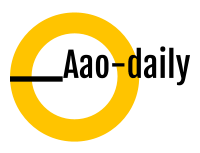Metal machining is a revolution that has transformed the world in leaps and bounds. Its sophistication and simplicity is something that has been echoed beyond borders. The array of technologies that is involved in metal machining is vast. It is for such reasons that manually operated metal machining has radically improved to include even laser technology.
The fundamental of metal machining lies in making of metal parts that can be used as tools or as part of a machine. For such products, dynamics such as the size, texture, design, shape and function are put into consideration. Fortunately, advancements in the metal machining arena have made this quite possible. Over time, the use of computer programs has been embraced in determination of cutting tools. The impact of metal machining with high efficiency levels cannot be understated.
CNC Machining
When it comes to metal machining, CNC machining has played such a huge role in the field. Computer Numerical Control refers to the automated machining by a computer. The preferred specifications are this met through the use of CNC throughout the process. It is through this process that machinery and tools movements can be controlled.
How the CNC Machining works
The systems involved in CNC machining are open or closed loop machining. Open loop machining uses signals that are in one direction. The closed loop system encompasses feedback that allows for error correction.
Once the tool is positioned, the program code then determines the exact movements. Closed loop system works well where there are many requirements that are comprehensive as with industrial applications. For metal work that does not involve a lot of speed or force, then the open loop system works well.
There are many attributes that can be obtained from CNC machining. For one, it eliminates the need for manual machine operators and increases efficiency. This is by way of automation. There is also the huge advantage of precision that is brought about by programming. Further, there is heightened reliability with minimal maintenance of CNC machines.
Precision Machining
This refers to machining that only allows for small cutting tolerances. The main factors that enable precision machining are the machine control and the rapid feed rates. Its wide use in tools and fabrication methods is highly recommended.
Types of Machining Tools
The process of metal machining involves a wide range of machining tools. Such tools have distinct roles in the making of various components.
Grinding tools refer to the use of a rotating wheel in order to obtain a finish that is fine.
Turning tools work by rotating an equipment.
Cutting tools involve use of devices to enable cutting and include saws and sheers.
Boring tools typically involve enlarging holes that previously existed.
Milling tools have several blades within a surface that is rotating. These work fo wherever designs that are unique are required to be obtained from materials.
To say the least, power driven machine tools are ultimate devices for the machining process.
For a fact, metal machining constitutes a huge role in manufacturing of metal components. With CNC and precision machining, the world of metal machining has been.

